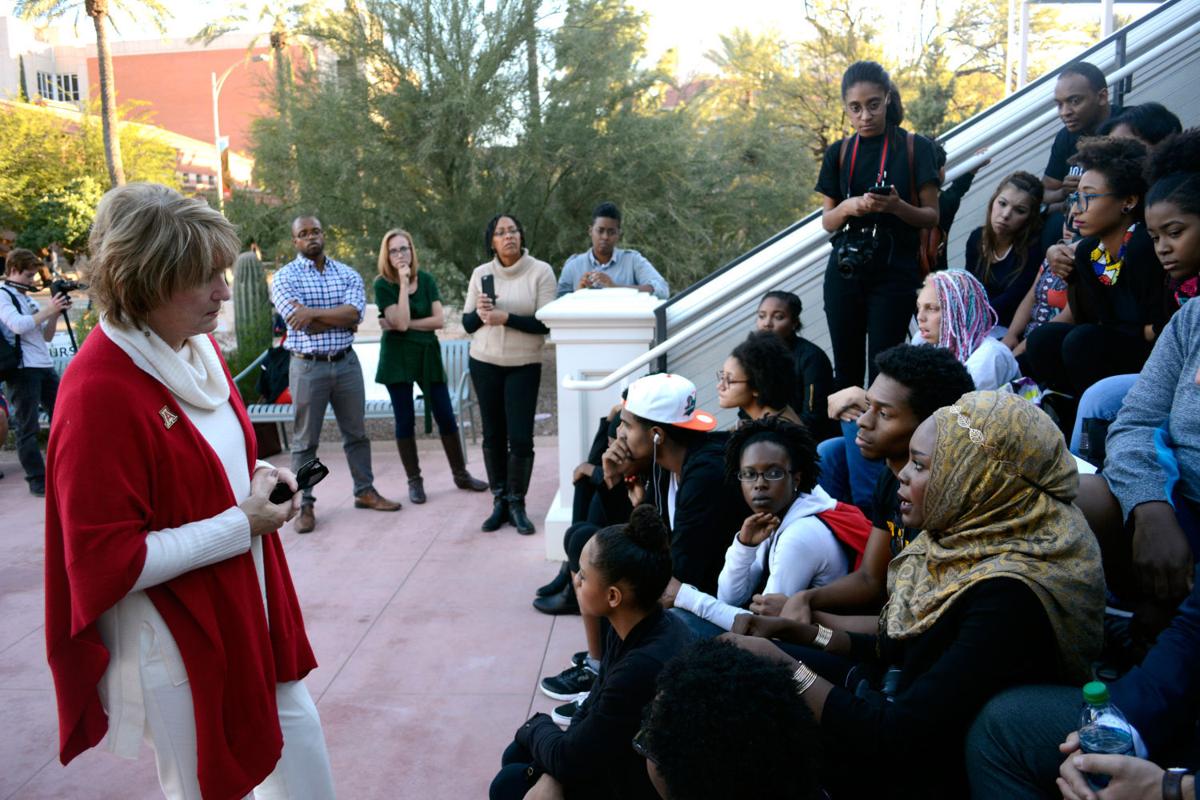The University of Arizona wants to become an oasis of tolerance in Tucson.
Amid student complaints of racism and homophobia on campus, school officials say they are stepping up efforts to make things better for minorities.
President Ann Weaver Hart has announced a new diversity task force to tackle student concerns, and the school is poised to hire a new six-figure administrator responsible for overseeing improvements.
Creating a more welcoming environment could give the UA a “competitive advantage” in the higher education marketplace, Provost Andrew Comrie said.
Institutions that embrace differences — in race, culture or sexual orientation, for example — often are more attractive to academics and high-achieving students, he said. And all stand to benefit from the cross-pollination of ideas that results from exposure to different perspectives.
“It is well established that diversity in background, view and approach is absolutely key to achieving excellence in teaching and research,” the provost said in a recent essay on a UA website.
More than 16,000 minority students attended the UA last year, close to 40 percent of the school’s population. In the 1980s, by comparison, about 10 percent of UA students were minorities.
Diversity has been on the UA’s radar for years — the school has given out annual diversity awards to its employees since the 1990s — and Comrie said the institution already is doing “a pretty good job.”
Even so, it’s not uncommon for black UA students to encounter the N-word on campus. Asian, Native American, Hispanic and transgender students also have reported episodes of discrimination or harassment from faculty members as well as fellow students. Some female students report similar problems.
Complaints surfaced early this year when UA faculty leaders conducted a “listening tour” with minority groups. And in November, several dozen black students held a protest for equality on the steps of Old Main.
Comrie said the school’s latest push to address diversity issues was not in response to student protesters. It began about a year ago when he appointed an internal committee to start planning the effort, he said.
Final interviews are underway for a new vice provost who will serve as chief diversity officer and oversee efforts to improve. The salary for the job has yet to be determined, but UA’s other two vice provosts make between $175,000 and $220,000. (See box)
Hart, in a statement last week announcing the diversity task force, called it “the beginning of what I hope will be a comprehensive response to the concerns that our students have expressed.
“My goal is to unify UA to work together to become a more inclusive, diverse and safe community,” the president said.
UA faculty chair Lynn Nadel, who led the recent listening tour with minority students, is hopeful the effort will bear fruit.
“We have the kind of culture at the UA that might allow us to do something good in this arena,” Nadel said.
“My sense is that from the president on down we are rolling up our sleeves, looking at this challenge as an opportunity to live up to our values.”





